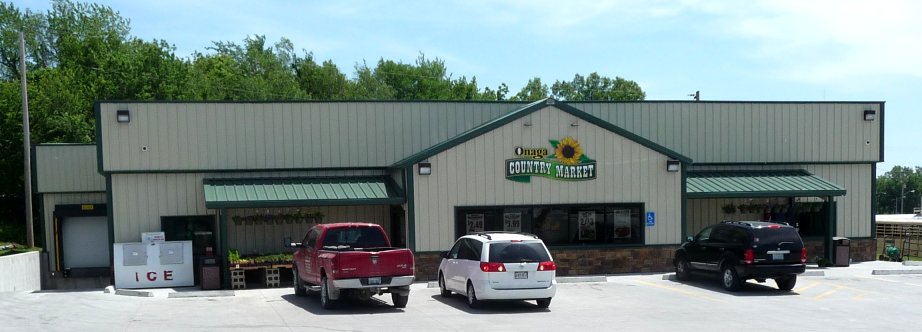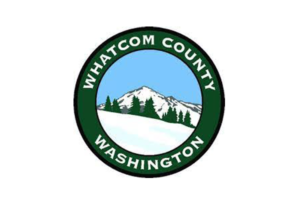We became aware of the plight of rural grocery stores a few years ago. Through USDA funding we have begun to research if and how a rural grocery store can viably serve as a food hub to strengthen its bottom line. This blog post by Saloni – Rural Grocery Stores as Food Hubs – 2 Birds, 1 Stone? – lays out the challenges faced by rural grocery stores and our hypothesis about food hubs as a potential strategy to increase their viability. We’ll be sharing preliminary learnings and exciting new resources in a few months. Stay tuned!
We are not alone in our concern about food access for rural communities and our excitement in bringing innovation to these grocery stores. Earlier this month, K-State convened the Fifth National Rural Grocery Summit for academics, advocates and store owners to share research and strategies to address the issues. These small communities are not waiting for Amazon to start delivering fresh groceries by drones to every Mayberry in America. They are operating shrewdly and inventing new business models that are showing signs of success.
Here are five strategies to increase the viability of rural grocery stores that caught my attention at the Summit. I hope they intrigue you as much as they did me!
1. Expanding into related businesses
Watching this video of Nick Graham as a 17-year-old grocery store owner made me believe he was a remarkable citizen. Hearing him speak on his experience ten years later convinced me that Nick is an instinctive businessman.
Today he owns four stores in rural Iowa and coordinates purchasing and delivery for other stores that are too small to place orders directly with the wholesaler. To be competitive he balances tradeoffs among quality, service and price (“pick one”), nets lower than average labor costs (see more in #3 below), and operates complementary businesses that share overhead. Nick operates his redistribution business out of his flagship store (“this would never work in a dedicated facility”) and opened an adjacent specialty meat processing facility to serve his wholesale customers. The trucks that deliver to these stores twice per week are used on other days to deliver products for a yet another agricultural supply business in which Nick is a partner. All of these strategies and synergies allow Nick to run his grocery business with zero operating debt.
But that’s not all. This serial entrepreneur is opening hardware stores. Similar to the wholesaler that supplies Nick’s grocery stores, the large national hardware chains are retailer-owned cooperatives that provide individual members scale advantages in purchasing, marketing and operational support, plus profit-sharing which flows back to the store owners. Opening a hardware store within or adjacent to the grocery store gives town residents an additional reason to shop locally, gives staff more hours of employment, and provides a larger base of business to share overhead costs.
2. Providing additional services
As rural towns shrink, it becomes more difficult to provide the basic services that larger communities take for granted. Post offices, libraries, banks and health clinics are just some of the retail-based services that have disappeared from small towns, but are now reappearing inside the grocery store. Offering these services not only draws foot traffic to the store, they also provide vital services to the community. Two examples really stood out.
Remarkably, a grocery store in a Kansas town, apparently too small even for an ATM, hands out bank checks with the payee, payor and amount left blank. Residents can fill in their name and address as the payor, make the check out to another party, and that party can cash the check at the store under a line of credit which I presume is collateralized by “we know where you live.” This is just one of the advantages of living in a tightly-knit community.
And Nick Graham is beginning to explore telemedicine, perhaps inspired by a Hy-Vee in nearby Cedar Rapids. In this example, clinical health care is provided at the store through a partnership with a local physicians group. There are a number of applications for this emerging means of health care delivery, from “virtual house calls” to various retail-based models. Hy-Vee has a private room staffed by a nurse. Another experiment involved a semi-private kiosk that enabled doctors to examine untended patients using videoconferencing and simple medical instruments for taking temperature and blood pressure.
Most of this innovation is answering consumer demand for greater convenience, but in a rural town it is much more than a convenience. It may be the only option for urgent medical care, or any type of routine health care for those without access to transportation.
3. Reducing costs
After inventory, payroll is the largest expense for a grocery store. At this year’s conference I learned about two seemingly absurd ways to reduce labor costs.
I have already mentioned that Nick Graham’s business enjoys lower than average labor costs. How does he do it? He says by treating employees with respect, just as he does his customers, and by paying them higher than market wages. This may seem counterintuitive, yet this approach reduces turnover and associated training costs, and creates a more experienced work force. Most of his employees have been with him for many years, and Nick admits, “I ask a lot of them.” Through their loyalty and productivity, Nick has been able to keep labor costs below the 10% of sales industry average.
Moving along to other innovators, here’s an unorthodox strategy for reducing labor costs: Don’t staff the store. If you get our monthly Good Food News Brief, you might have read about Farmhouse Market in New Prague, Minnesota. Not through robots nor a literal free-for-all, but through its business structure and technology, this store operates and is open to its members 24/7. It is fully staffed and open to the public just 9 hours per week.
The store’s co-owner, Kendra Rasmussen, says it works like Snap Fitness, a gym franchise that gives members 24/7 access by swiping a card. Members at Farmhouse Market pay an upfront fee and sign a legal contract, yet they are not owners like a typical grocery co-op. They receive a 5% discount, can shop whenever they want and also have access to an upstairs community space for activities like kombucha-making and sewing classes.
Even Farmhouse Market’s suppliers have 24/7 access. The store works with 15 local farmers who have key cards and can stock the shelves when it is convenient for them, which is often well before “normal” business hours. The store uses surveillance equipment that allows Kendra to monitor the store from her phone, but so far it has not been needed. Every shrinkage incident (“theft”) has been accidental, and the shoppers themselves have brought the oversight to the owners’ attention. This is another advantage of living in a small town.
4. Creative partnerships
I was on a panel about how Community Food Assessments can reveal nutritional and health needs in the community, uncover gaps in the food system that allow these needs to persist, and identify new programs, policies and enterprises that can start to make a dent. After some energetic discussion, one store owner asked, “Once you make more nutritious food available, how do you get people to buy it?” Out of concern for her community she opened a grocery store that offers a range of fresh, whole foods, but then realized that “all they want is Cheetos and beer.” What can she do?
It is well documented that it takes much more than nutrition availability to change the way people eat. The many barriers include pricing, social, cultural, educational, equipment and preference issues, to name just a few.
While not a panacea, I was cheered by one small town’s attempt to address this while simultaneously supporting the local grocery store, recognizing its significance to the community’s health. Hospital chef Brian Dolezal shared how Clara Barton Hospital in Hoisington, Kansas, has partnered with its local grocery store to design nutritious meals around the store’s weekly flyer. Each week he develops recipes that use featured sale items that shoppers can buy more affordably, to prepare nutritious meals throughout the week. The menus are displayed in the hospital lobby on a life-size cardboard cutout of Clara Barton (photo), founder of the American Red Cross.
I love the simplicity of this program, that it provides education on nutrition and meal preparation from an authoritative source, and that it strategically intertwines food, medicine and rural commerce.
5. New distribution methods
Last but in no way least, here is a big idea that was presented in one tiny bullet during a session on distribution: Use the Department of Health’s fleet of emergency vehicles to distribute groceries to rural stores.
One of the major barriers for small towns is that their stores don’t meet the distributor’s order minimums. Unless they can buy from a reseller like Nick, or use their own vehicle to pick up from a wholesaler like Costco, these stores will close as their order sizes dwindle. There was a lot of discussion at the conference about various alternatives to address the issue. Can distributors establish drop points along highways? Does a grocery store-based food hub give wholesalers enough incentive to keep delivering in order to backhaul locally-produced foods? What about the post office? Etc.
While it may not offer a perfect solution, one idea deserves a much closer look. Research conducted by the North Dakota Association of Rural Electric Cooperatives made an interesting connection to the rural grocery store distribution issue. They considered USPS’s huge fleet that makes a daily journey to almost every remote town in the U.S., but the vehicles are not refrigerated. On the other hand, the health department has a fleet of refrigerated vehicles that stand ready to deliver large inventories of pharmaceuticals and medical supplies in the event of a pandemic outbreak or an act of bioterrorism. This fleet can reach every citizen of North Dakota within 2 hours. The vehicles wear out more quickly when they are idle, so the department is actively seeking synergies to “gently use” these assets to keep them in service. Wow! Using them to distribute groceries seems like a demonstration project worth doing.
I hope this gives you the same hope it gave me: that there is plenty of ingenuity to solve these important problems. If you attended the conference, what were your most interesting takeaways? Did this spark any new ideas? If so, we’d love to hear from you!




Hellow my name is Rajinder. I’m thinking to open small town grocery store. I just want to know if you guys supply.
Hi Rajinder. Thank you for reading our blog! And congratulations on your plans for a small town store. We are not suppliers. You may find that one of the national wholesalers like Associated delivers to your small town. If not, you may need to find another small store that can buy and redistribute to your store, as Nick Graham does in Iowa. I hope that helps!
I live in a small town in South Carolina that is growing due to many new manufacturing companies and need for housing.There is a grocery store not a chain opening in a few months I have great cooking skills and knowledge. I want to pitch and idea of making recipes using there sale items and fresh seafood that is otherwise not available .I would like to be able to do cooking classes etc.How do you think I can make this seem profitable to the business owners.I could also provide information on products that are not readily available otherwise in this area .I have worked at both other grocery stores in my city so I have customers that would follow me anywhere ,I had accident last year that does not allow me to work lifting as is required by other stores .I am ready to go back to work and think that I can bring a lot to this business , any suggestions ? Thanks for the information it sparked my interest!
Hi Cassandra. It sounds like you have a lot of great ideas that can help this new grocery store. If you’d like, you can set up a brief call with me to discuss your background and how you might pursue this opportunity. Thanks, [email protected]
My husband and I are going to open a small conveinance store does anyone have any tips for us. ???
Joyce, I would suggest that you look into the Rural Grocery Initiative at K-State, if you are opening a store in a rural area. They have done a lot of work in this area that might be helpful to you and your husband. https://www.ruralgrocery.org/ Good luck in this venture!
Deb
Did you open your store? I would love to hear how you are doing?